Colindale
Hospital
Colindale Avenue, NW9 5HG
Medical
dates:
Medical
character:
Tuberculosis. Later, general, then mainly long-stay.
By 1890 the Cleveland Street Infirmary
of the Central London Sick Asylum District - one of the new Sick Asylum
Districts established by the Metropolitan
Asylums Board (M.A.B.) - had become overcrowded and
the Local Government Board decided that at least 350 more beds were
required.
The cost of land in central London was prohibitively high and it was decided to build a new infirmary as far out of town as permissible. After inspecting several sites, a 27.5 acre site at Colindale - a healthy, elevated and quite open district midway between Hendon and Edgware - was selected as the infirmary would be easily accessible from the Edgware Road. The site and its preparation cost £12,428.
In 1898 guests met in Fitzroy Square to be conveyed by omnibus to the site, where the foundation stone for the new building was laid.
The new infirmary for the Central London Sick Asylum District was opened officially in March 1900 by Dr Thomas Prescott, the Chairman of the Board of Managers of M.A.B.
The infirmary had 274 beds and consisted of a central main block with a detached house for the Medical Superintendent on one side of it and another - the Nurses' Home - on the other. In the front and the middle of the main block were the administrative offices and a chapel. Two ward pavilions, each two storeys high, which could accommodate 240 patients, flanked the central building. Separate from these were two other smaller wards for isolation cases and children. The blocks were connected to the main block by a corridor.
The operating theatre had a plate glass front wall and roof. At the back of the site were the laundry, kitchens and storerooms. There was a mortuary in a separate building. The infirmary and its furnishing had cost £115,000.
In 1913 the Central London Sick Asylum District was dissolved and the infirmary was sold to the newly formed City of Westminster Union, who
renamed it the Hendon Infirmary.
During WW1 the Infirmary received more surgical cases, including crashes from the nearby Hendon aerodrome.
In December 1919, the site changed hands again when M.A.B. took over its administration and reopened it in January 1920 as the Colindale Hospital - a tuberculosis hospice with 271 beds for male patients with advanced disease.
By 1926 the Hospital had 377 beds.
In 1930, following abolition of the Boards of Guardians, control of administration passed to the LCC. By this time the Hospital had 349 beds for adult patients.
In 1931 the Hospital's first thoracoplasty for tuberculosis was performed.
A new wing with 20 beds was added in 1934.
In 1939, at the outbreak of WW2, the Hospital joined the Emergency Medical Service. During the Phoney War some 200 TB patients were discharged to their homes in case their beds were needed for air-raid casualties.
In 1941 a large bomb exploded in West Hendon, killing 100 and injuring 350 others. Fifty casualties were brought to the Hospital, suffering serious injuries from glass splinters.
Its proximity to the aerodrome made the Hospital prone to bombing. The adjacent Colindale underground station received a direct hit by a land mine, destroying the entrance to the Hospital. A new one had to be built. One ward was directly hit by a bomb; there were no fatalities, but many patients were injured. One bomb narrowly missed the Nurses' Home, and one fell in the Silk Stream. The British Library Newspaper Archive was hit and a 6-foot girder with 50-year-old copies of The Lancet was found embedded in the lawn of the Medical Superintendent's house.
On 1st July 1944 a V-1 flying bomb demolished two ward blocks. Ten people were killed, including a student nurse and four members of the Women's Auxiliary Air Force. Following this, given the continuing rocket threat, the patients and staff were evacuated to Abergele in Wales. The vacant beds were immediately filled with other TB patients, looked after by staff from the South Western Hospital.
In 1947 clinical trials began for a new drug treatment for pulmonary tuberculosis - Streptomycin. (This was later mixed with a chemical cocktail of other drugs - PAS in 1948 and INAH in 1951 - causing the post-war annual death rate from TB of 25,000 to fall to a few hundred by the 1970s).
In 1948 the Hospital joined the NHS under the control of the Hendon Group Hospital Management Committee, part of the North West Thames Regional Health Authority. It continued to specialize in tuberculosis cases but, with the antibiotic treatment increasingly available for TB, it gradually became a general hospital. Extended over the years, by 1957 it had 350 beds.
A new physiotherapy department was built in 1966.
In 1974, following a major reorganisation of the NHS, the Hospital came under the control of the Edgware/Hendon District Health Authority, part of the North West Thames Regional Health Authority. It was used mainly for long-stay cases. It had 227 beds.
The Hospital officially closed in 1996, with services transferring to Barnet Hospital or the newly rebuilt Edgware Community Hospital.
Present status (December 2007)
Some buildings remain in use for elderly patients with mental health problems, but these are due to be relocated to the Dennis Scott Unit at Edgware Hospital or to Barnet Hospital. Services for patients with drug- or alcohol-addiction also remain at the southwest segment of the site, as does the Blood Transfusion Service. However, most of the Hospital buildings have become derelict.
The 16.3 acre site is due to be redeveloped by Fairview New Homes, who bought it in 2007 without planning permission. The purchase price was undisclosed, but the company intend to build 700 homes at a projected cost of £120m. Included in the scheme is the possibility of a new building for Barnet College and some replacement healthcare facilities, which Barnet NHS Trust could lease back from Fairview. Redevelopment is planned to begin in 2010.
UPDATE: June 2014
The Grade II listed administration block has been restored and is now known as Jenner House. The housing estate - known as Pulse - is almost completed.
The land safe-guarded for Barnet College became available when the College decided to relocate elsewhere. The 0.68 hectare site is now being developed by Fairview as Varsity, which consists of two apartment blocks named Oxford House and Cambridge House.
The cost of land in central London was prohibitively high and it was decided to build a new infirmary as far out of town as permissible. After inspecting several sites, a 27.5 acre site at Colindale - a healthy, elevated and quite open district midway between Hendon and Edgware - was selected as the infirmary would be easily accessible from the Edgware Road. The site and its preparation cost £12,428.
In 1898 guests met in Fitzroy Square to be conveyed by omnibus to the site, where the foundation stone for the new building was laid.
The new infirmary for the Central London Sick Asylum District was opened officially in March 1900 by Dr Thomas Prescott, the Chairman of the Board of Managers of M.A.B.
The infirmary had 274 beds and consisted of a central main block with a detached house for the Medical Superintendent on one side of it and another - the Nurses' Home - on the other. In the front and the middle of the main block were the administrative offices and a chapel. Two ward pavilions, each two storeys high, which could accommodate 240 patients, flanked the central building. Separate from these were two other smaller wards for isolation cases and children. The blocks were connected to the main block by a corridor.
The operating theatre had a plate glass front wall and roof. At the back of the site were the laundry, kitchens and storerooms. There was a mortuary in a separate building. The infirmary and its furnishing had cost £115,000.
In 1913 the Central London Sick Asylum District was dissolved and the infirmary was sold to the newly formed City of Westminster Union, who
renamed it the Hendon Infirmary.
During WW1 the Infirmary received more surgical cases, including crashes from the nearby Hendon aerodrome.
In December 1919, the site changed hands again when M.A.B. took over its administration and reopened it in January 1920 as the Colindale Hospital - a tuberculosis hospice with 271 beds for male patients with advanced disease.
By 1926 the Hospital had 377 beds.
In 1930, following abolition of the Boards of Guardians, control of administration passed to the LCC. By this time the Hospital had 349 beds for adult patients.
In 1931 the Hospital's first thoracoplasty for tuberculosis was performed.
A new wing with 20 beds was added in 1934.
In 1939, at the outbreak of WW2, the Hospital joined the Emergency Medical Service. During the Phoney War some 200 TB patients were discharged to their homes in case their beds were needed for air-raid casualties.
In 1941 a large bomb exploded in West Hendon, killing 100 and injuring 350 others. Fifty casualties were brought to the Hospital, suffering serious injuries from glass splinters.
Its proximity to the aerodrome made the Hospital prone to bombing. The adjacent Colindale underground station received a direct hit by a land mine, destroying the entrance to the Hospital. A new one had to be built. One ward was directly hit by a bomb; there were no fatalities, but many patients were injured. One bomb narrowly missed the Nurses' Home, and one fell in the Silk Stream. The British Library Newspaper Archive was hit and a 6-foot girder with 50-year-old copies of The Lancet was found embedded in the lawn of the Medical Superintendent's house.
On 1st July 1944 a V-1 flying bomb demolished two ward blocks. Ten people were killed, including a student nurse and four members of the Women's Auxiliary Air Force. Following this, given the continuing rocket threat, the patients and staff were evacuated to Abergele in Wales. The vacant beds were immediately filled with other TB patients, looked after by staff from the South Western Hospital.
In 1947 clinical trials began for a new drug treatment for pulmonary tuberculosis - Streptomycin. (This was later mixed with a chemical cocktail of other drugs - PAS in 1948 and INAH in 1951 - causing the post-war annual death rate from TB of 25,000 to fall to a few hundred by the 1970s).
In 1948 the Hospital joined the NHS under the control of the Hendon Group Hospital Management Committee, part of the North West Thames Regional Health Authority. It continued to specialize in tuberculosis cases but, with the antibiotic treatment increasingly available for TB, it gradually became a general hospital. Extended over the years, by 1957 it had 350 beds.
A new physiotherapy department was built in 1966.
In 1974, following a major reorganisation of the NHS, the Hospital came under the control of the Edgware/Hendon District Health Authority, part of the North West Thames Regional Health Authority. It was used mainly for long-stay cases. It had 227 beds.
The Hospital officially closed in 1996, with services transferring to Barnet Hospital or the newly rebuilt Edgware Community Hospital.
Present status (December 2007)
Some buildings remain in use for elderly patients with mental health problems, but these are due to be relocated to the Dennis Scott Unit at Edgware Hospital or to Barnet Hospital. Services for patients with drug- or alcohol-addiction also remain at the southwest segment of the site, as does the Blood Transfusion Service. However, most of the Hospital buildings have become derelict.
The 16.3 acre site is due to be redeveloped by Fairview New Homes, who bought it in 2007 without planning permission. The purchase price was undisclosed, but the company intend to build 700 homes at a projected cost of £120m. Included in the scheme is the possibility of a new building for Barnet College and some replacement healthcare facilities, which Barnet NHS Trust could lease back from Fairview. Redevelopment is planned to begin in 2010.
UPDATE: June 2014
The Grade II listed administration block has been restored and is now known as Jenner House. The housing estate - known as Pulse - is almost completed.
The land safe-guarded for Barnet College became available when the College decided to relocate elsewhere. The 0.68 hectare site is now being developed by Fairview as Varsity, which consists of two apartment blocks named Oxford House and Cambridge House.
N.B. Photographs obtained in December 2007
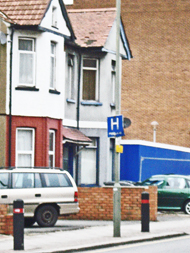
The remaining 'H' sign in Colindale Avenue.
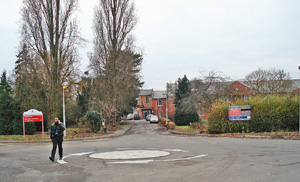
The roundabout on the approach from Colindale Avenue with the Blood Transfusion Service sign on the left and the Hospital directions on the right.
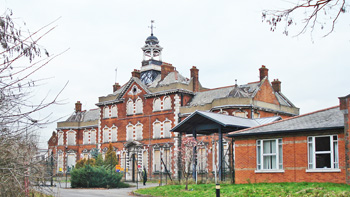
The central administration block, Grade II listed in 2001, is now fenced off.
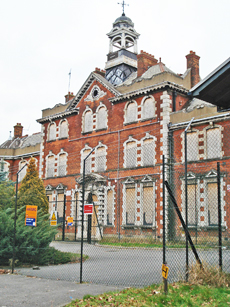
The administration block housed the offices, the Board Room, the chapel and the nurses' quarters. The kitchens were at the back.
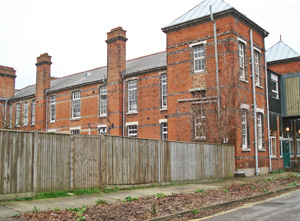
Various semi-derelict 2-storey ward blocks and buildings (above and below) are fenced off and guarded on behalf of Fairview Homes. Some parts of the Hospital are still in use by Barnet, Enfield and Haringey Mental Health NHS Trust.

The remaining 'H' sign in Colindale Avenue.

The roundabout on the approach from Colindale Avenue with the Blood Transfusion Service sign on the left and the Hospital directions on the right.

The central administration block, Grade II listed in 2001, is now fenced off.

The administration block housed the offices, the Board Room, the chapel and the nurses' quarters. The kitchens were at the back.

Various semi-derelict 2-storey ward blocks and buildings (above and below) are fenced off and guarded on behalf of Fairview Homes. Some parts of the Hospital are still in use by Barnet, Enfield and Haringey Mental Health NHS Trust.
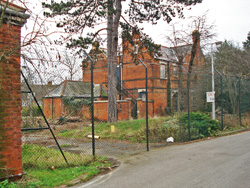
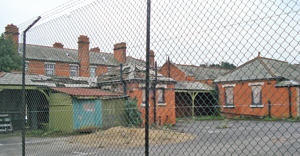
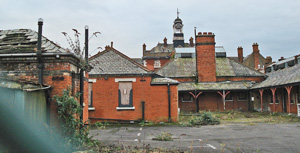
N.B. Photographs obtained in October 2011
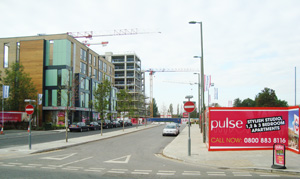
Work has begun on the new housing estate (above and below).
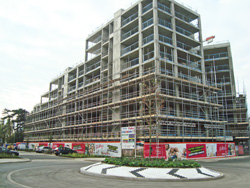
N.B. Photographs obtained in March 2014
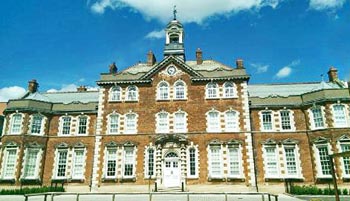
The restored administration building (above and below).
(Photographs courtesy of Ms Fiona Khilji).
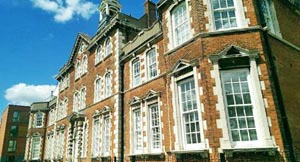
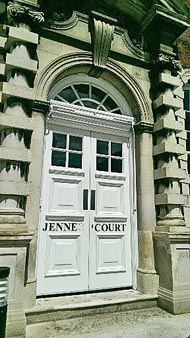
The building is now known as Jenner Court.
(Photograph courtesy of Ms Fiona Khilji).
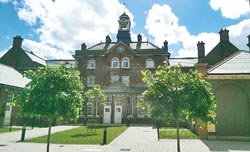
The back of the buildings (above and below).
(Photographs courtesy of Ms Fiona Khilji).

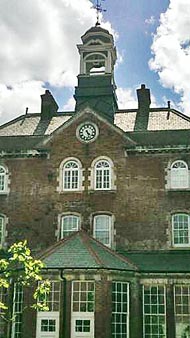
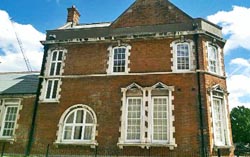
A 2-storey block has also survived (above and below).
(Photographs courtesy of Ms Fiona Khilji).
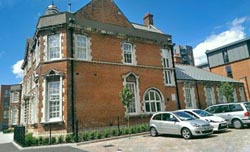
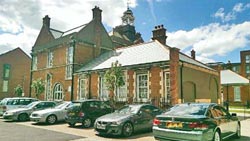
Other restored old Hospital blocks.
(Photograph courtesy of Ms Fiona Khilji).
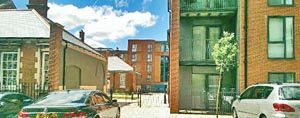
New housing surrounds the old Hospital buildings.
(Photograph courtesy of Ms Fiona Khilji).
UPDATE: June 2014
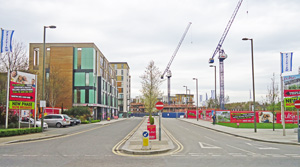
Work on the new housing estate has progressed. The development is to be known as Pulse.
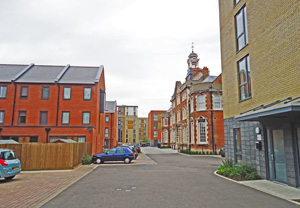
The former Hospital administation block is now surrounded by new housing.
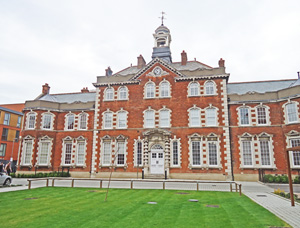
The former administration block (above and below) has been converted into 9 luxury apartments.
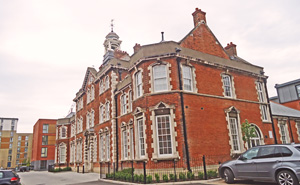

The courtyard at the back of the building.
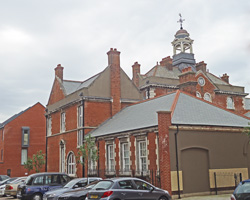
Smaller surviving buildings nearby.
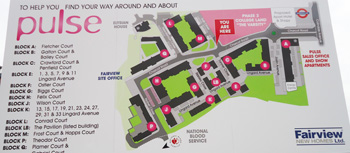
Street plan for the new development.
(Author unstated) 1900 The New Infirmary of the Central London Sick Asylum District. British Medical Journal 1 (2049), 884-885.
(Author unstated) 1928 Colindale Hospital, Hendon. British Journal of Nursing (September), 233.
Townsend RW 1948 Colindale Hospital 1898-1948. An Unauthorised History Censored from the Memories and Musings of Many People. Publisher unstated.
http://collage.cityoflondon.gov.uk
http://edithsstreets.blogspot.co.uk
http://list.historicengland.org.uk
http://williameckersley.ideastap.com
https://en.wikipedia.org
https://londonpostcodewalks.wordpress.com
www.24dash.com
www.28dayslater.co.uk
www.20thcenturylondon.org.uk
www.aim25.ac.uk
www.britainfromabove.org.uk
www.bw-international.net
www.derelictlondon.com
www.derelictplaces.co.uk
www.flickr.com (1)
www.flickr.com (2)
www.flickr.com (3)
www.flickr.com (4)
www.forever-changes.com
www.london.gov.uk
www.ocsc.ie
www.pastremnants.com
www.pastscape.org.uk
www.prints-online.com
www.times-series.co.uk
www.urbexforums.com
www.victoriansociety.org.uk
www.wgi.co.uk
www.workhouses.org.uk
www.worldarchitecturenews.com
Return to home page